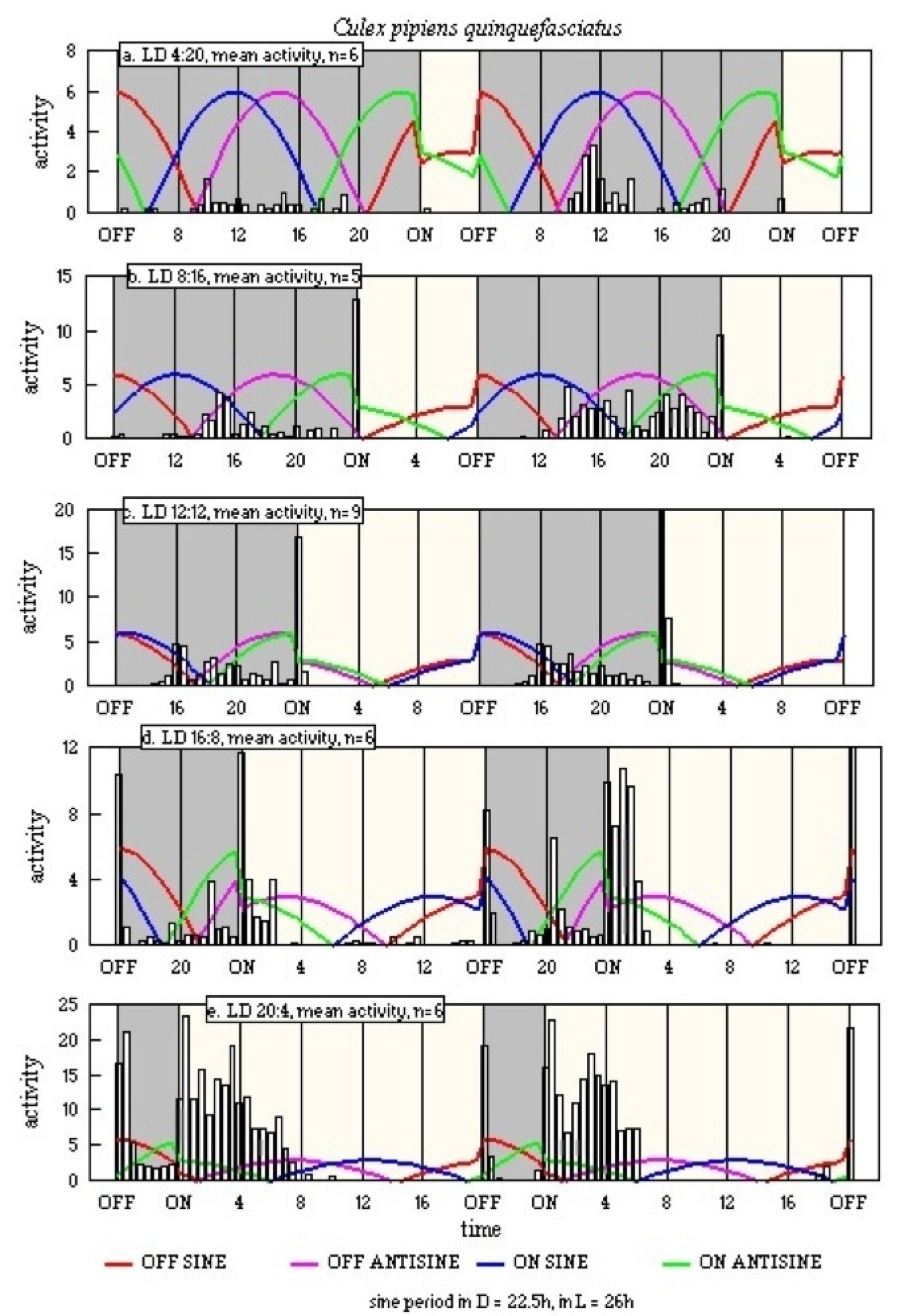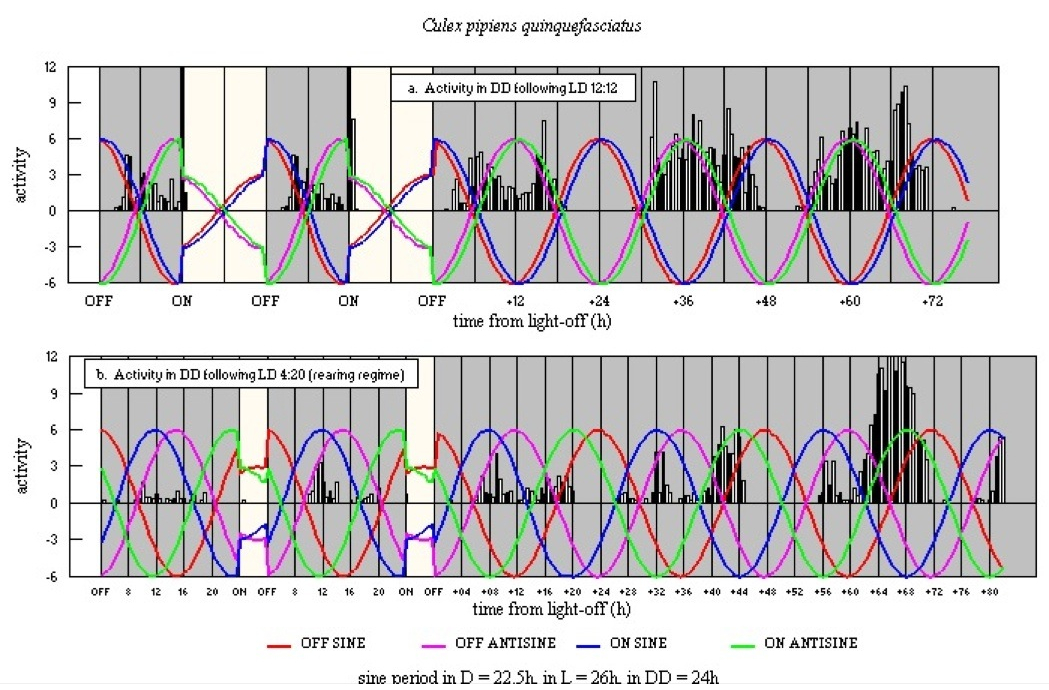

Biological Clocks in Mosquitoes - Section 2 |
Results were obtained for only one fully night-active species, Culex pipiens quinquefasciatus, using a strain, or colony, originating from Lagos in Nigeria (6°27'N), and designated LAGOS. A strain from Banjul, The Gambia, referred to as GAMBIA, was found to show good circadian rhythms in both DD and LL (50 lux) by Jones (1976). In LL the activity was unimodal with t @ 26h, and in DD activity was bimodal with t between specific peaks @ 24h. The activity patterns of GAMBIA, however, differed from those used in this paper.
Figure 47 shows the activity of LAGOS in five LD regimes. In LD 12:12, the norm for what is an essentially tropical species, the only peaks are N, around 4 to 8h after light-off and M. In sharp contrast, the GAMBIA strain studied at Sussex showed a strong E peak.
Figure 47
The results of experiments with LAGOS in DD following rearing regimes of LD 12:12 or LD 4:20 are shown in Figure 48. The activity pattern in DD following LD 12:12 (Figure 48a) is confusing, perhaps indicating an extended period in the cycle following the last light-off, then DDt = 24h. The histogram of activity in DD following LD 4:20 (see Figure 48b) indicates that it is the two light-on entrained sine waves, ON SINE and ON ANTISINE, that underlie the N and M peaks.
Figure 48
A possible mechanism for the LD 12:12 result, especially the N peak, is suggested in Figure 49. Remembering that the observed patterns of activity may well be no more than manifestations of the underlying clocks, the sine waves have been plotted with wholly positive values, postulating that the threshold for the commencement of activity is from the perigee of the wave. This shows that the N in LD 12:12 (see Figure 49a) may be the last quarter of the ON SINE. Thus portrayed, the sine peaks also have a broader base for the permissive time for activity. The peaks of actual activity seen at light-off +44h and +68h, which seem anomalous in Figure 48a, now can be seen to fall within the first third of the ON SINE wave. In the range of LD regimes (see Figure 47) M is clearly underlain by ON ANTISINE and this is strongly supported by the DD results (see figures 49a and 49b).
Figure 49
|
©1998 - Brian Taylor CBiol FIBiol FRES 11, Grazingfield, Wilford, Nottingham, NG11 7FN, U.K. Visiting Academic in the Department of Life Science, University of Nottingham |